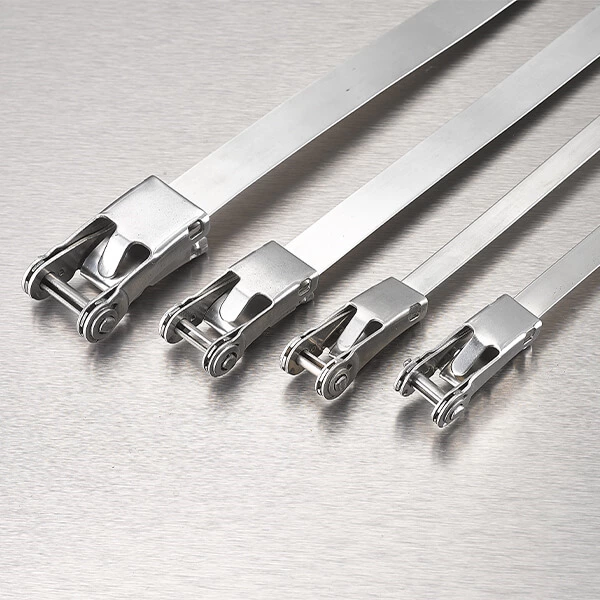Extruded Stainless Steel Cable Ties Materials And Key Points For Selection
Stainless Steel Cable Tie is a tie-down tool widely used in various fields. It is made of high-quality stainless steel material. Its characteristics are corrosion resistance, oxidation resistance and high strength. Choosing the right cable tie is crucial for the engineering and assembly process. The following will introduce the material and purchase points of this cable tie.
Material introduction
1. Stainless steel material
The cable tie is mainly made of stainless steel, of which 304 stainless steel and 316 stainless steel are the most common. 304 stainless steel has general corrosion resistance and performs well in general environments; while 316 stainless steel performs better in high temperature and high corrosion environments. Therefore, when choosing a cable tie, it is necessary to choose the appropriate stainless steel material according to the specific use environment.
2. Coating treatment
Some cable ties may be plated to increase their corrosion resistance. Common coatings include zinc, aluminum and polymer coatings. Zinc and aluminum coatings provide additional protection, while polymer coatings can improve the corrosion resistance of stainless steel cable ties and reduce surface damage to the tied objects.
Key points for purchase
1. Use environment
If it is in a humid or highly corrosive environment, it is recommended to choose 316 stainless steel, and consider whether additional coating treatment is needed.
2. Strength requirements
When choosing, it is necessary to ensure that the strength of the selected stainless steel cable tie is sufficient to meet the actual needs to ensure safety and reliability.
3. Size specifications
According to the size and shape of the bundled object, choose the appropriate size of stainless steel to ensure that it can be firmly and effectively bound.
4. Coating selection
If the working environment has high requirements for corrosion, you can choose stainless steel cable ties with additional coating treatment. According to specific needs, choose zinc, aluminum or polymer coating to improve the corrosion resistance of stainless steel cable ties.
5. Adjustable design
Some cable ties have an adjustable design and can be flexibly adjusted according to needs. This is very useful for bundling objects of different sizes, which can improve the flexibility and convenience of use.
Precautions for use
1. Installation method
When using stainless steel cable ties, ensure the correct wrapping method. Usually, cable ties have a locking mechanism, which should be ensured to be firmly locked to prevent loosening or falling off during the bundling process. Follow the manufacturer's installation instructions for correct operation to ensure that the stainless steel cable ties can firmly bind the objects.
2. Avoid overstretching
Although cable ties have a certain strength, overstretching may cause them to deform or damage. Be careful not to use excessive force when using them to ensure that the cable ties can firmly fix the objects without damaging them.
3. Pay attention to the surface of the tied objects
When using cable ties, pay attention to the surface of the tied objects. For some more fragile or easily damaged surfaces, you can choose cable ties with polymer coatings to reduce surface damage to the tied objects.
By understanding the material and purchase points of stainless steel cable ties, we can better choose products that meet specific needs. In actual use, ensure that the cable ties are used correctly according to the manufacturer's instructions to ensure their performance and life.



